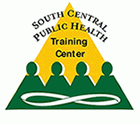
Managing Conflict in the Workplace
Course Description:
Conflict management skills are used in all aspects of life. From interpersonal to work situations, all of us need these skills in one way or another. Some of the fundamentals of effective conflict management are intuitive, and some stretch our preferred methods of dealing with others. This course discusses dealing with conflict from a variety of different types of individuals and includes practical applications using a healthcare case study to build fundamental skills in managing conflict in a healthcare setting.
Target Audience
Academic Faculty/Staff, Federal Government Employees, State Government Employees, Local Government Employees, Non-Government Employees and Students
Learning Objectives
- Identify the 6 keys to managing conflict in the workplace
- List some root causes of workplace conflicts
- Identify the fundamentals of principled negotiations
- Describe the four steps for managing workplace conflict
- List the steps to take when planning for a conversation about conflict
- State the difference between assertive and aggressive behavior
- Explain the value of the “long term relationship” in managing workplace conflict
- Describe how the four style preferences react to conflict
- Explain the techniques of good listening skills for managing workplace conflict
Instructor:

Tim Keogh, Ph.D.
Clinical Associate Professor
Health Systems Management
Tulane University Health Sciences Center
Available Credit
- 3.00 Participation/CETulane Professional and Continuing Education (PaCE) awards 3.00 hour(s) of credit for completing Managing Conflict in the Workplace
Price
Required Hardware/software
System Settings
This course is designed to work most effectively if your computer and internet connection meet certain minimal requirements. This course can be accessed using a Windows 10 PC or a Mac with High Sierra1, Mojave, or Catalina. Pop-up blockers should be disabled when viewing the course. Internet Explorer 11 (for Windows 10), or the current version of Google Chrome, Mozilla Firefox, or Apple Safari (for Windows 10 and or Mac) is required. Many of our courses require Java and JavaScript enabled.
Links to External Websites
Links to websites outside this course will open in a new window or tab. Some browsers may minimize the course window. If this occurs, maximize the course window to return to the course.
Adobe Acrobat Reader (for desktops and laptops)
Adobe Acrobat Reader is required to access some documents in this course. If you need to download a free copy of Acrobat Reader, click here.
Internet Connection Speed
A minimum download speed of 1.5 Mbps is recommended for an optimal experience, which is commonly the speed associated with a basic DSL or a cellular/satellite connection. A faster connection, such as cable or fiber service, with further enhance your online experience. A Wi-Fi connection is generally acceptable, but it is dependent upon one of the two services mentioned above. You can check your internet connection speed at http://www.speedtest.net/.

 Facebook
Facebook Twitter
Twitter LinkedIn
LinkedIn Forward
Forward